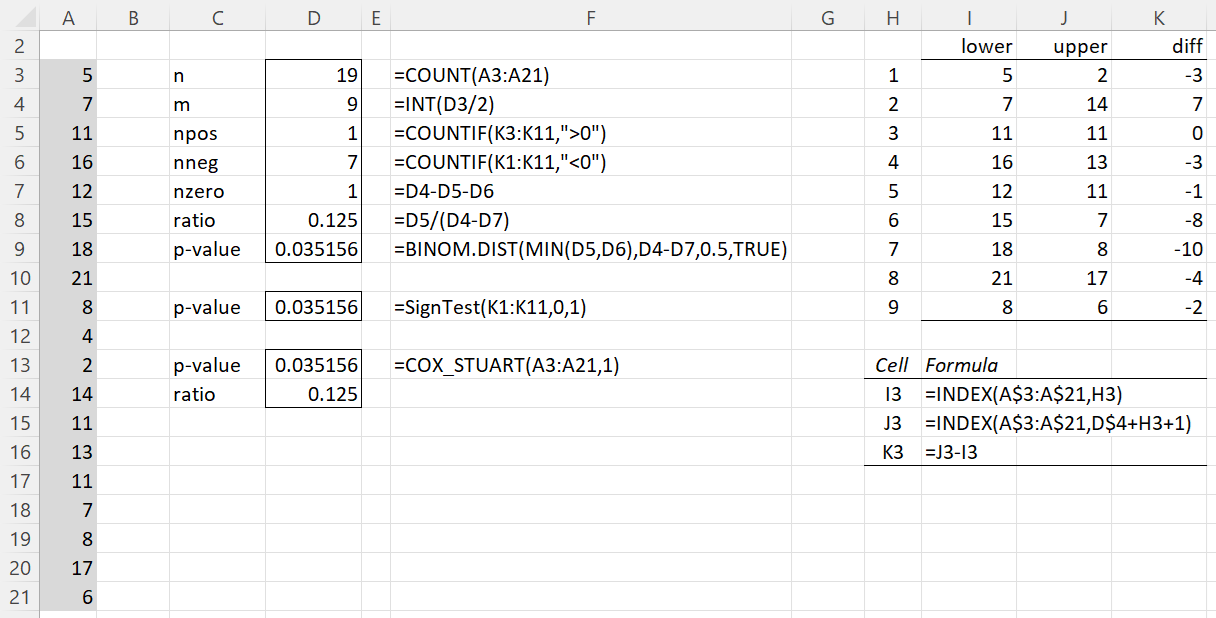The Cox-Stuart test is a simple test that is used to determine whether a time series has an increasing or decreasing trend.
Suppose the time series is x1, x2, …, xn. Let m = INT(n/2) and define s1, …, sm where si = Sign(xm+i+1 – xi). We now perform the sign test of this series (using the binomial distribution).
Example
Example 1: Determine whether there is a decreasing trend for the time series in column A of Figure 1.
Figure 1 – Cox-Stuart Test
The p-value from the test is shown in cell D9 using the binomial distribution (or in cell D11 using the Slope Test). Since p-value = .035156 < .05 = α, we have a significant result provided the time series is decreasing. Since the ratio of positive values to non-negative values in column K is .125 (cell D8), which is less than .5, we can conclude that the time series is indeed decreasing. Note that this is a one-tail test since we specified a decreasing trend.
If we had specified an increasing trend, then clearly we would have a non-significant result (p-value = 1-.035156 = .964844). If we wanted to determine whether there was a trend in either direction, then we would perform a two-tailed test with p-value = 2*.035156 = .070312, which is not significant.
Worksheet Function
Real Statistics Function: The Real Statistics Resource Pack provides the following array function.
COX_STUART(R1, tails): returns a column array with the p-value of the Cox-Stuart test for the data in the column array R1 along with the ratio between positive differences over total differences.
tails = 1 or 2 (default). If ratio < .5 then any trend is decreasing, while if ratio > .5 then any trend is increasing.
Applying this function in range D13:D14, we get the same results as shown above for Example 1.
Examples Workbook
Click here to download the Excel workbook with the examples described on this webpage.
Reference
Logos, T. (2009) Trend analysis with Cox-Stuart test in R. R-Blogger
https://www.r-bloggers.com/2009/08/trend-analysis-with-the-cox-stuart-test-in-r/
